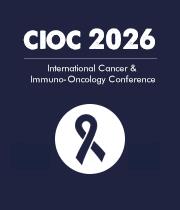Title : A case-based approach using IMPeTUs criteria in FDG PET/CT reporting of multiple myeloma
Abstract:
[18F]FDG PET/CT has become an integral component in the evaluation of Multiple Myeloma (MM), offering significant advantages in disease detection, staging, treatment response assessment, and prognostication. The Italian Myeloma criteria for PET Use (IMPeTUs) provide a standardized framework for interpreting PET/CT in MM, incorporating key parameters such as metabolic activity, number and location of focal lesions, bone marrow uptake, and the presence of extramedullary disease (EMD). This talk will present a case-based overview of the clinical relevance and practical application of IMPeTUs in three distinct patient scenarios.
The first case highlights a 62-year-old female presenting with back pain and weight loss. MRI revealed multiple lumbosacral lesions, and subsequent FDG PET/CT showed more than ten focal FDG-avid lesions involving the spine, skull, and long bones, along with extensive lytic lesions and extramedullary involvement of lymph nodes, spleen, and lungs. This case illustrates the prognostic significance of high disease burden and EMD, both of which are associated with adverse outcomes.
The second case involves a 55-year-old male with known MM who showed FDG-avid lytic lesions at baseline. Post-therapy PET/CT demonstrated a complete metabolic response, underscoring the utility of FDG PET/CT in assessing treatment efficacy and guiding further management. Achieving a complete metabolic response is associated with improved progression-free and overall survival.
The third case discusses a 48-year-old female with MM and a pathological fracture of the right humerus. Pre-therapy PET/CT revealed widespread skeletal and soft tissue involvement. Post-treatment imaging showed resolution of disease elsewhere, with residual uptake limited to the fracture site, likely reflecting healing rather than active disease. This emphasizes PET/CT’s role in distinguishing post-therapeutic changes from residual disease, particularly in the context of bone lesions and fractures.
These cases collectively demonstrate the value of FDG PET/CT and IMPeTUs criteria in the comprehensive management of MM. In alignment with findings from the National Oncologic PET Registry and NCCN guidelines, PET/CT not only influences therapeutic decisions in a significant proportion of cases but also serves as an independent prognostic tool. Imaging parameters such as the number of focal lesions, SUVmax values, and the presence of EMD correlate strongly with treatment outcomes. As we look to the future, the development and application of novel PET tracers may further refine imaging strategies, particularly in non-secretory or hypometabolic disease variants.
This talk aims to highlight the practical application of standardized PET/CT reporting through IMPeTUs, and how it supports more informed, individualized care pathways in patients with multiple myeloma.



